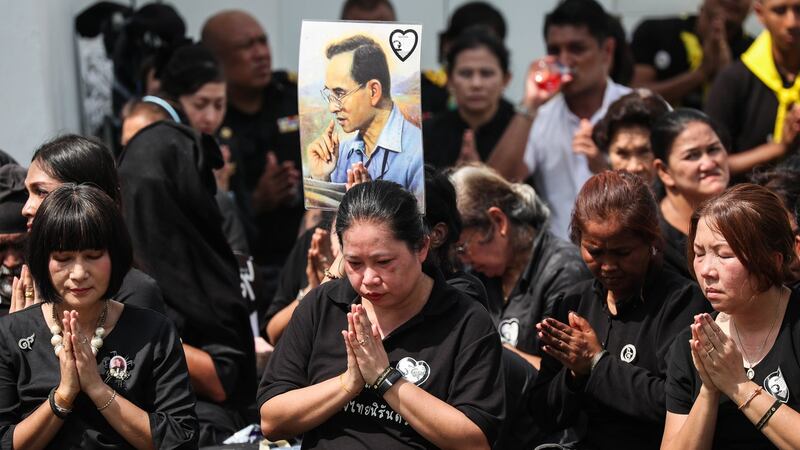A ceremony to transfer the remains of Thailand's King Bhumibol Adulyadej to his spectacular golden crematorium in the royal quarter of Bangkok began on Thursday after a year of mourning for the monarch.
Three separate and intensely solemn processions involving thousands of troops, a golden palanquin, a chariot and a royal gun carriage will move the royal urn representing King Bhumibol’s remains from the Dusit Maha Prasad Throne Hall to the crematorium.
The journey along a two-kilometre (1.2-mile) route will take at least three hours and is being watched by tens of thousands of mourners dressed all in black and broadcast across the country.
Thais have braved tropical heat and torrential downpours to secure street-side vantage points to witness the funeral.

Thousands of police and volunteers are on hand to ensure order and entry into the royal quarter, which has been tightly controlled to eliminate the faint possibility of protest against the monarchy or military government.
The elaborate funeral for King Bhumibol will take place over five days and began on Wednesday with his son, King Maha Vajiralongkorn, performing Buddhist merit-making rites before chanting monks and officials in immaculate white uniforms.
King Bhumibol will be cremated on Thursday evening within a golden edifice built over a year and representing mystical Mount Meru, where Buddhist and Hindu gods are believed to dwell.
Deceased Thai royals have traditionally been kept upright in elaborate urns during official mourning. But King Bhumibol, who spent much of his early life in the West, opted to be put in a coffin, with the urn placed next to it for devotional purposes.
King Bhumibol’s death at the age of 88 on October 13th, 2016, after a reign of seven decades, sparked a national outpouring of grief and a year of mourning. Millions of Thais visited the throne hall at Bangkok’s Grand Palace to pay respects.

The adulation he inspired was fostered by palace courtiers who worked to rebuild the prestige of a monarchy that lost its mystique and power when a 1932 coup ended centuries of absolute rule by Thai kings.
He was also genuinely respected for his development projects, personal modesty and as a symbol of stability in a nation frequently rocked by political turmoil, though his influence waned in his final years.
The funeral is by design an intensely sombre event, but also rich in history and cultural and spiritual tradition.
Mourners are permitted to prostrate when royal processions pass but must not shout out “Long Live the King” or hold up mobile phones to take photos or selfies. –AP



